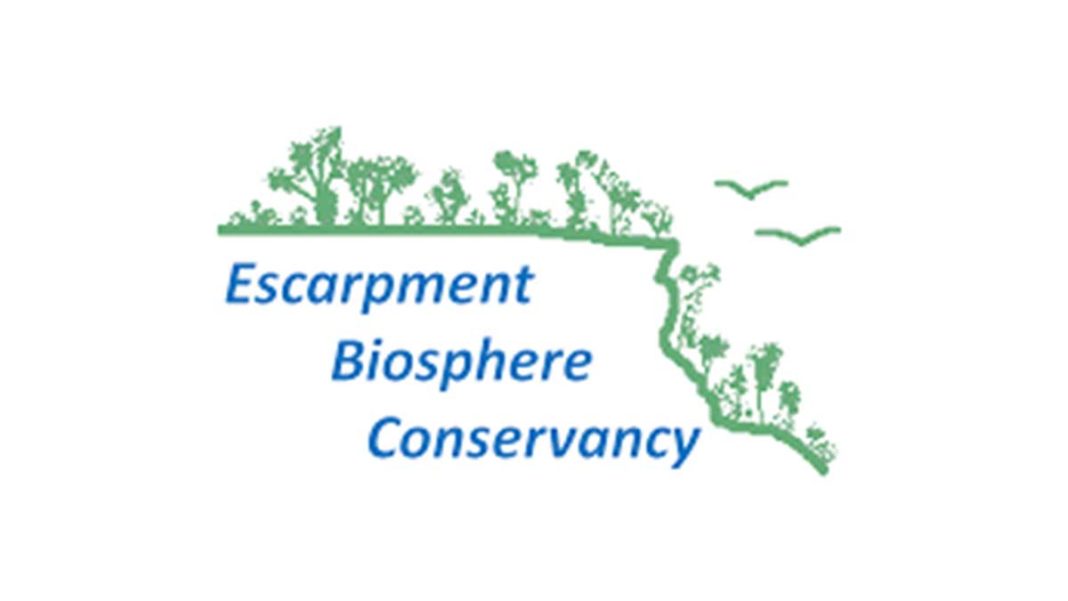TEHKUMMAH – The ink is now dry on the $665,000 deal for a 486-acre parcel of land surrounding the Michael’s Bay townsite. Escarpment Biosphere Conservancy (EBC) executive director Bob Barnett popped by The Expositor office last week to confirm the closing and to verify that the EBC has put down a substantial deposit on a neighbouring 300-acre parcel that will link the Michael’s Bay property to Blue Jay Creek Provincial Park—opening up several possibilities for the future.
The 486-acre site purchased by the EBC surrounds the historic Michael’s Bay townsite (and even includes a small portion of the townsite itself). The townsite property was acquired by the Michael’s Bay Historical Society in April.
The surrounding property being purchased by the EBC includes land north of Manitou River Road, part of a pond, the land on both sides of two kilometres of the Manitou River and an easterly strip that connects with 600 metres of Michael’s Bay shoreline, including Beach Ridges.
Beach Ridges is described as “a very singular topography in Manitoulin Island.”
The property joins Blue Jay Creek Park, includes both sides of Manitou River and surrounds a ghost town recently purchased by the Michael’s Bay Historical Society. The EBC is particularly interested in the property as it supports almost the same species as Blue Jay Creek Provincial Park
“EBC is working on the conservation of this land to protect riparian zones, dunes, forests and fens,” noted Mr. Barnett. “Some of the species of concern reported on the area are: lake sturgeon, Northern brook lamprey, Hill’s thistle and Pitcher’s thistle. Some plant communities that this land houses are graminoid coastal meadow marsh type and little bluestem long-leaved reed grass, a Great Lakes wheat grass dune grassland type. It also includes Michael’s Bay Beach Ridges, a unique sand dune glacial storm formation on Manitoulin Island.”
The bay contains “priority dune habitat as well as crucial shore, wetland fen and riparian habitat supporting many species at risk including, but not limited to, Gattinger’s aglanis, Blanding’s turtle and spotted turtle.”
Mr. Barnett noted the protection of this area will provide biological corridors for all species at risk found at Michael’s Bay and Bue Jay Creek Provincial Park.
“There is a high potential for migratory/wetland bird populations like the bank swallow within the riparian, dune and fen zones of Michael’s Bay,” noted Mr. Barnett. “The inclusion of approximately two kilometres of Blue Jay Creek within the property boundaries and post-glacial series shoreline increases the potential for fish, amphibian and aquatic mammal species at risk native to the region.”
The historic Michael’s Bay townsite, the “ghost town” referred to by the EBC, is near and dear to the hearts of many Islanders, having once been the largest community on the Island. Many long-established Island families can trace at least one of their ancestors back to the logging town.
The town of Michael’s Bay faded into history along with the huge stands of timber for which Manitoulin was originally known. As the timber stands were cut and turned into farmland, the associated jobs disappeared and many of the townsfolk migrated to other Island communities.
The Michael’s Bay townsite also includes an Odawa graveyard, along with several settler cemeteries, that were the focus of local history buffs such as the late Doug Tracy and the late Jean McLennan.
The EBC also laid down a $229,000 deposit on the adjacent 300-acre parcel of property last week and is working toward finalizing that purchase as well.
The news of the EBC purchase was met with some cautious optimism by the Michael’s Bay Historical Society (MBHS).
“Hopefully, we will be able to work with them,” said MBHS president Ed Sagle upon hearing the news. He noted that Mr. Barnett has attended the society’s meetings in the past.
As for their own townsite property, Mr. Sagle said that MBHS is working on some plans, but the advent of the pandemic slowed things down dramatically.
He noted that many of the MBHS stalwarts have passed on and the organization could use some new members. “I think I might be just about the last of the originals,” he said.
Mr. Barnett said that one of the projects the EBC is considering is a way for visitors to safely cross the river to get to the properties and the possibility of some day developing a trail system on the property.
In the meantime, although the EBC has closed the deal on the Michael’s Bay property thanks to some government funding, they are still raising funds for the property. “There are a lot of associated costs we still need to deal with,” said Mr. Barnett.





